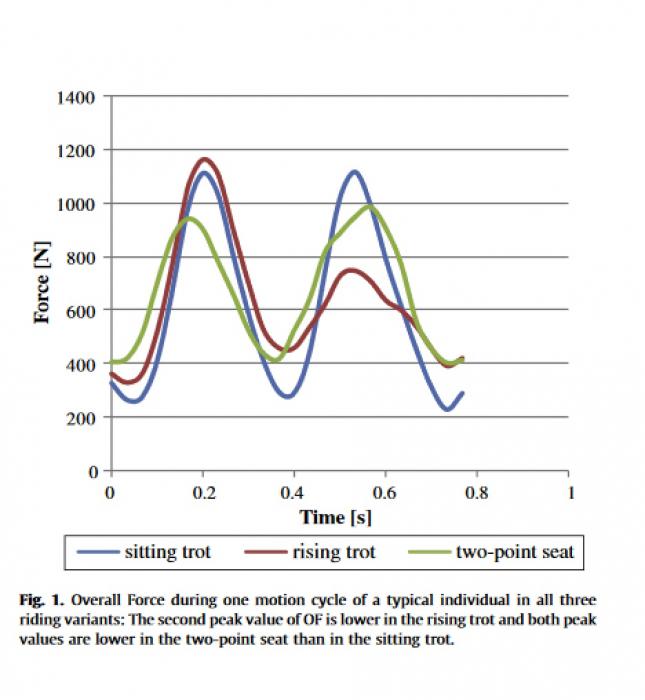
Forces on the horseback in different positions during trot
Three types of trotting riding technique are examined via treadmill sessions. There was one rider and ten horses under the same type of saddle with different tree widths. Measurements were done via a pressure measuring pad and Expert Vision system.
There is a significant reduction of pressure beneath the stirrup fixation in two-point seat compared to rising trot and sitting trot. The sum motion and longitudinal motion of the centre of pressure (COP) are significantly highest in sitting trot and lowest in two-point seat. There is no difference in lateral motion.
During two-point seat the load on the horseback is more constant but during rising trot the rider only stands in the stirrups during one stance in the motion cycle. This indicates an asymmetric loading of the horse’s back. It would be expedient to change between left and right side regularly. Use a combination of rising and sitting trot in young horses and horses with back problems because of the risk of overloading of the back due to the overall force impact on the back.
The lower the excursion of the COP the higher the stability. During two-point seat the stability is the highest, the lowest in sitting trot. The higher the trotting speed, the higher and sustained muscle activity of the trunk muscles is needed. Higher tension in the long back muscles influences the pressure distribution under the saddle. The use of only one rider means that caution is needed in generalising the results.
> Peham, et.al., Veterinary Journal (2010);184(1):56-59. All rights reserved to 2009 Elsevier Ltd. Click here for the Pubmed summary Click here for the full-text article


